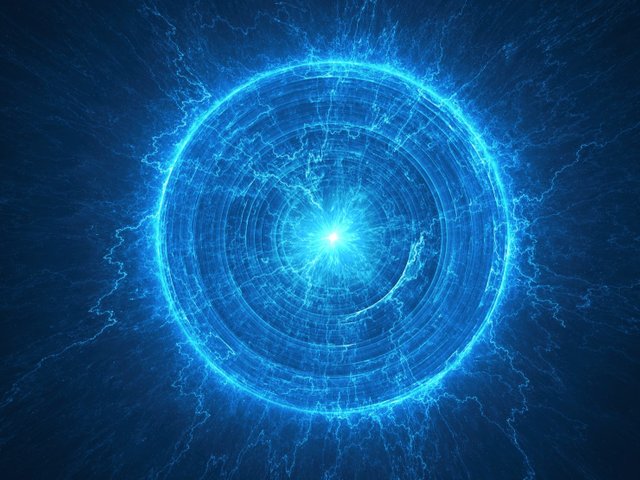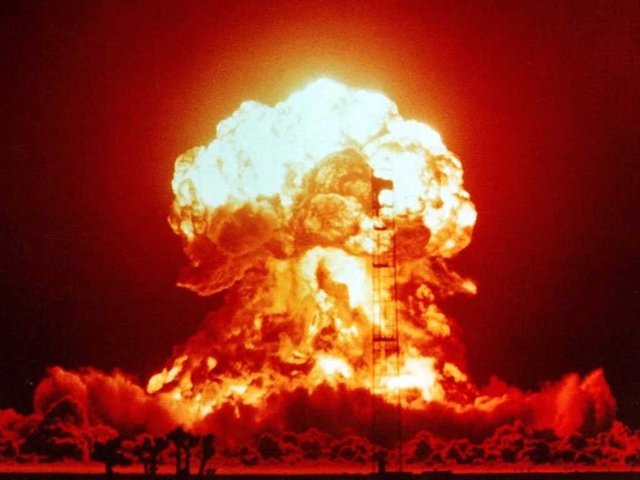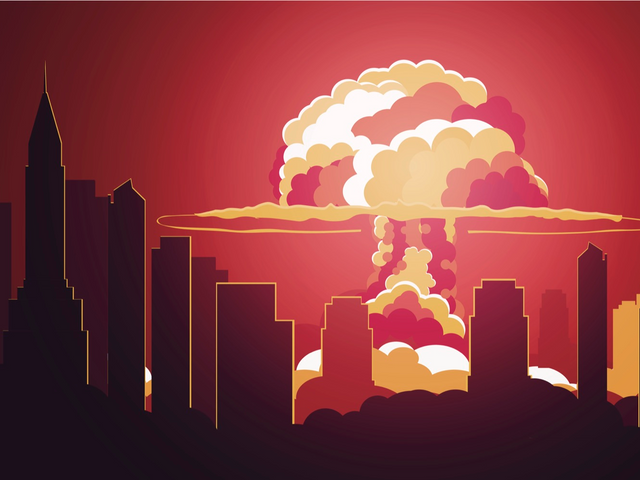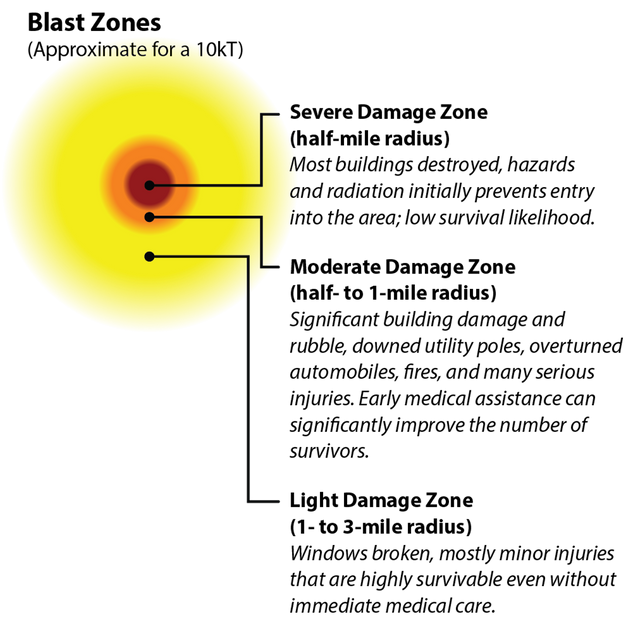Nuclear bombs trigger a strange effect that can fry your electronics

A nuclear detonation creates plenty of terrifying effects, including a blinding (and burning) flash of light, a building-toppling blast wave, an incendiary fireball, and radioactive fallout that can drift for hundreds of miles.
But there's a lesser-known consequence of a nuclear explosion that can drastically expand its damage zone: an electromagnetic pulse, or EMP.
EMPs are rapid, invisible bursts of electromagnetic energy. They occur in nature, most frequently during lightning strikes, and can disrupt or destroy nearby electronics. However, nuclear EMPs can cover an entire continent and cripple tiny circuits inside modern electronics on a massive scale. The power grid, phone and internet lines, and other infrastructure that uses metal is also prone to effects that resemble those of a devastating geomagnetic storm.
Savvy readers called this to our attention after we published expert advice on why you should never get in a car after a nuclear bomb is detonated. Brooke Buddemeier, a radiation expert at Lawrence Livermore National Laboratory, suggested sheltering deep within a building instead, and tuning in to a radio for instructions.
But a reader named Taylor K. pointed out that "radios, computers, anything that use[s] electrical transmission to power itself will be effectively neutralized" by the bomb's EMP.
He's correct — but fortunately only in certain situations.
How electromagnetic pulse works
The first is a nuke's invisible burst of gamma rays, a form of light typically emitted by the "hottest and most energetic objects in the universe," according to NASA. A small fraction of a bomb's energetic yield — between 0.1% and 0.5% — is emitted as gamma rays. These slam into air molecules, knock off electrons, and accelerate the negatively charged particles to about 90% of the speed of light.
Earth's magnetic field then shuttles many of these high-speed electrons toward the planet's poles in a corkscrew-like pattern. The electrons respond to this movement by letting off their newly acquired energy as a powerful soup of electromagnetic radiation, including radio waves.
This is a nuclear electromagnetic pulse. It happens within a fraction of a microsecond, and the surge of energy can overload or "shock" sensitive electronic devices — especially the kinds we heavily rely on today.

Image Source
"[T]he radiation can be collected by metallic and other conductors at a distance, just as radio waves are picked up by antennas," according to an unclassified 1977 report from the Department of Defense and Department of Energy. "The energy from the EMP is received in such a very short time, however, that it produces a strong electric current which could damage the equipment. An equal amount of energy spread over a long period of time, as in conventional radio reception, would have no harmful effect."
When EMP passes through metal objects like a phone, computer, or radio, they can "catch" this incredibly powerful pulse. This can generate a rogue current of electricity that moves through a modern device's tiny circuits and can disrupt or even destroy them. Power transmission or telecommunications equipment, meanwhile, can overload from the excess current, spark, and fail for miles around.
If you've ever turned on a microwave oven and noticed your phone's Wi-Fi or Bluetooth connection momentarily drop out, you've experienced disruptive electromagnetic waves — and had a very small taste of what could happen with an EMP.
The intensity of a nuclear detonation's EMP is about 30,000 to 50,000 volts per meter — thousands of times greater than the one your microwave bleeds off.
Fortunately, not all nuclear blasts are created equal when it comes to EMP.
Why altitude is everything
Nuclear detonations that occur dozens or hundreds of miles above Earth could have devastating consequences compared to those that happen on the ground.
At a high elevation, gamma rays can more easily spread out, hitting many upper-atmosphere air molecules over a large area at once. The low density of air allows electrons to move more freely and maximize the intensity of an EMP.
In fact, a 2008 report by the EMP Commission suggests that the right nuclear device detonated at the right altitude could bathe the entire continental US in EMP, disrupting telecommunications and power grid infrastructure to "catastrophic" effect.
But if an explosion were to occur closer to the ground, many of the gamma rays would slam into the earth. Those rays would have a harder time creating a large electric field that could generate widespread EMP. And the greater density of air wouldn't help, either.

Image Source
The US government actively plans for 15 disaster scenarios, one of which is a terrorist-caused nuclear detonation that occurs close to the ground with a yield of about 10 kilotons — roughly 66% as powerful as the Hiroshima blast.
This setup is the one we discussed with Buddemeier, and in that case he says the nuclear blast itself would give you a lot more to worry about than bricked electronics or power loss.
"[T]here would be some localized EMP effects," he told Business Insider in an email, "but if you were close enough for you equipment to be damaged by EMP (within a couple miles), then you are also close enough to be significantly impacted by the blast wave."

Image Source
Put another way, you may not survive inside this zone, which can stretch a couple of miles in diameter. And if you did, you'd have to worry about climbing out of rubble before checking to see whether your radio still worked.
It's more likely, Buddemeier says, that within about 5 miles of the blast "you may have a disruptive impact, which doesn’t 'fry' your equipment, but can cause 'latch-up' (e.g., like the endless spinning hourglass on your phone) until restarted."
There are hundreds of variables that determine whether or not an EMP affects electronics, Buddemeier says, including "the size and orientation of your device, the structure of the building you are in, plug-in or battery, if it is behind a surge protector," and so on.
Because many radios have simpler, less sensitive circuitry than a phone, they're likely to be a first line of information after a ground blast.
"There is a good chance that there will be plenty of functioning radios even within a few miles of the event and that radio transmission towers outside of the impacted area will still be able to send information on the safest strategy to keep you and your family safe," Buddemeier says.
Source : businessinsider
This post has received a 0.45 % upvote from @drotto thanks to: @banjo.